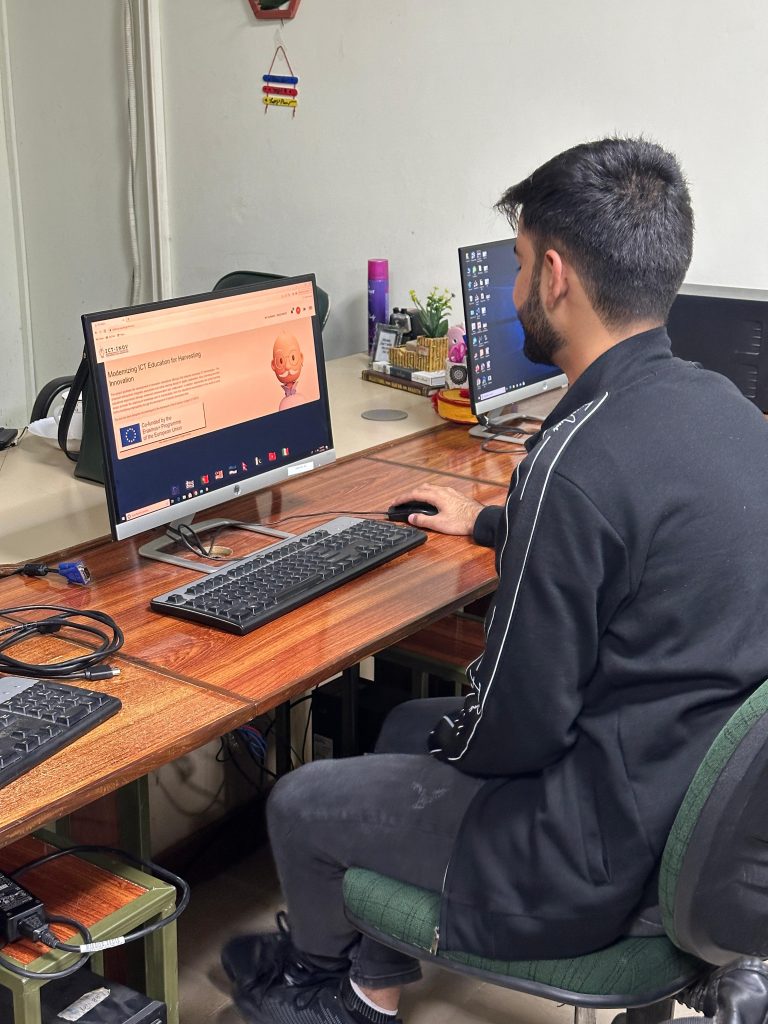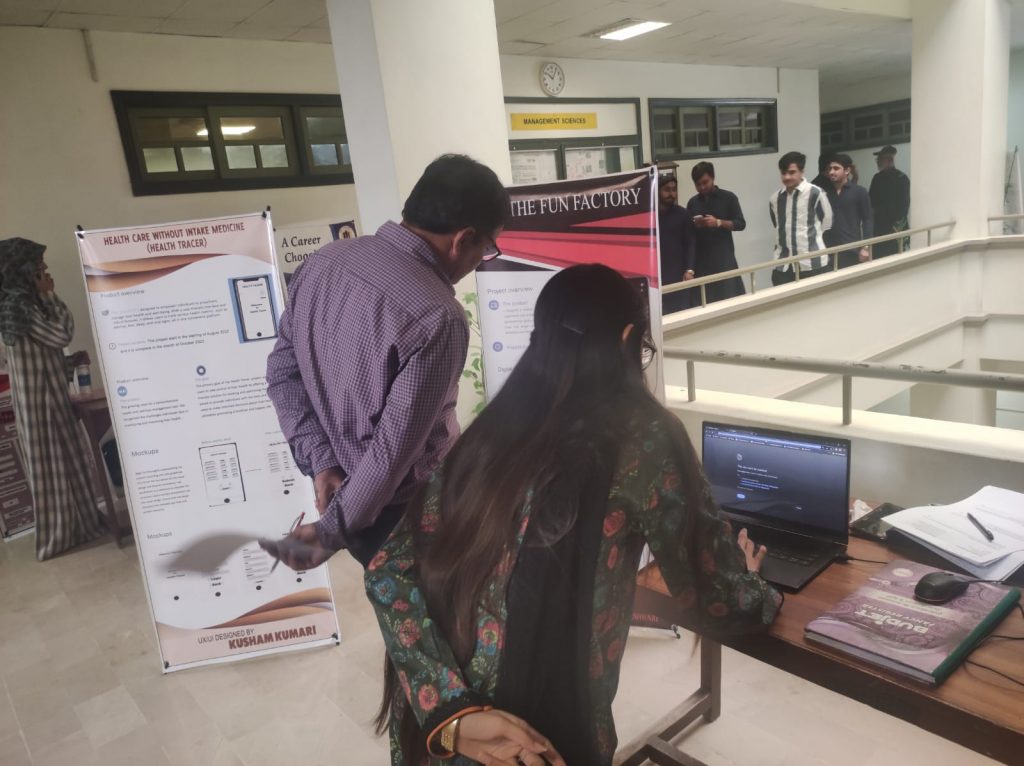
Description of the course
The course introduces students to analysis, design, and evaluation of the interaction between people and information and communication technologies. The aim is to give students an adequate understanding of the concepts of usability, user experience, and user-centered design.
Description of the participants
This is a compulsory course for Computer Science, Software Engineering, and Information Technology students. Course is offered in the 3rd year of studies in the Department of Computer Science, ISRA University, Hyderabad Pakistan. In July 2023 semester, the course is attended by 36 students.
Description of gamified design thinking activities
In Human-Computer Interaction (HCI), the gamified design thinking activities were introduced in the form of a semester project, combining the principles of design thinking with the engaging elements of gamification to create an interactive and immersive learning experience for students. The purpose of this semester project was to enhance the students’ understanding of design concepts, problem-solving skills, and creativity while making the learning process enjoyable and rewarding.
Throughout the semester, students were introduced to various design thinking methodologies and principles, such as empathy, ideation, prototyping, and testing. The project was divided into several stages, each representing a specific phase of the design thinking process.
Step 1. Problem discovery.
In problem discovery, students were challenged to research the world of visual programming by exploring different programming constructs and tools. They gained a solid understanding of the fundamental concepts and techniques required for creating interactive visual applications.
Step 2. Problem re-definition.
Students focused on understanding the needs and preferences of potential users or clients. They were engaged in activities such as conducting user interviews, creating personas, and analyzing user feedback. These activities helped students develop empathy for their target audience and gain insights into their motivations, pain points, and desired outcomes.
Step 3. Ideation.
Students participated in brainstorming sessions and collaborative activities to generate innovative ideas for their human-computer interaction projects. They learned techniques like mind mapping, mood boards, sketching, and rapid prototyping to translate their ideas into tangible concepts and designs.
Step 4. Prototyping.
Students brought their ideas to life by creating interactive prototypes of their human-computer interaction projects. They utilized appropriate Figma® to develop functional prototypes that showcase the core features and functionalities of their designs.
Step 5. Testing.
Students showcased their interactive prototypes of their human-computer interaction projects and conducted user testing sessions to gather feedback on the prototypes from the target users. They observed how users interacted with the prototypes and gathered insights into what works well and what needs improvement. Students also improved their design based on the feedback received, making necessary refinements and adjustments to improve usability and address any identified issues.







